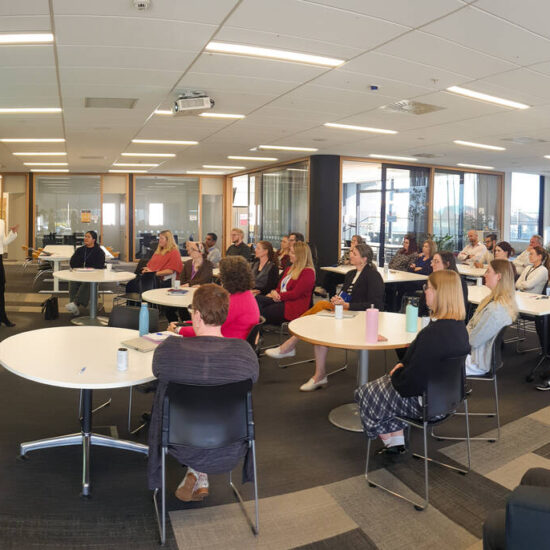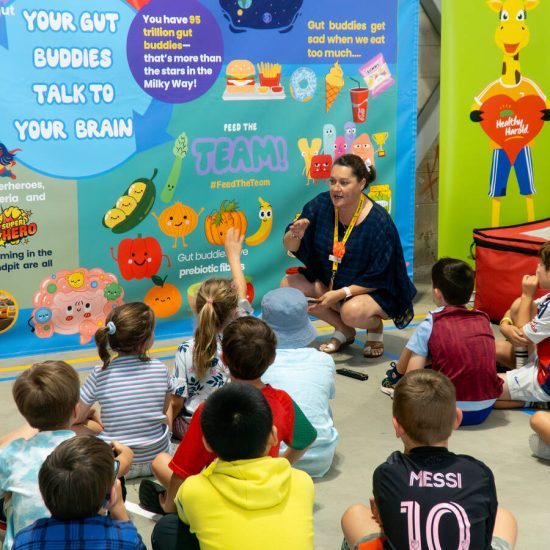Onsite education sessions
The Gut Foundation equips Kiwis, through in person workplace and school workshops, with the tools they need to prevent gut disease and take control of their health
New Zealand has one of the highest rates of gut disease globally, with bowel cancer killing more Kiwis than breast and prostate cancers combined. We’re here to change that.
Click the button below to book your workplace education session or continue reading to discover which session is best suited for your team.





Choose the workplace session that best suits your business or school
There’s something for everyone to digest!
Office health and well-being session
Demonstrate your commitment to the wellbeing of your team! Sign up for our three-part corporate gut health sessions and empower your colleagues with essential knowledge to prevent gut-related diseases. Keep reading to discover what you’ll learn.
Putting the health into health and safety
Boost your team’s health and improve productivity with our on-site Toolbox Sessions, specially tailored to equip workers with practical tips and knowledge on gut health and gut disease prevention.
We loved working with the following organisations

Naylor Love
“Hi Alice and Margaret – On behalf the Naylor love team – thanks for coming and talking Shit! I will admit – there were a few hesitations from certain members of the team but the feedback I have received has been awesome! Great to get so much engagement, it’s a credit to you two!”
Paul Stevenson

Canterbury & Wanaka Bayleys
“We loved it, your approach and how engaging you are with the team, made this topic very relatable … it is one of the best initiatives we have done for our people in a long time.”
Many thanks, Rachel Dovey Director

South Island Dominion Constructors
“Dear Alice, your gut health talks have positively impacted our whole team. After listening to your presentation, a number of them visited their GP to get checked. We’re now more aware, healthier, and connected. Thank you for being our wellness champion.”
Warm regards, Simon Shaw Divisional Manager

Goodman
“Thank you for coming to talk to our team about the importance of gut health and knowing your normal. While the topic is not something anyone likes talking about, you made the session fun and engaging while presenting us with the all-important facts, some of which could be lifesaving. It was a good team bonding exercise as we all had a good laugh talking ‘shit’ together!”
Maria Welch H & S Manager

Marsh McLennan
“I wanted to let you know that I received very positive feedback about the session you presented. Our colleagues from other locations who joined via Zoom reached out to me asking for the resources and brochures that you brought with you. Your presentation skills are exceptional, and our colleagues thoroughly enjoyed the session. We would love to work with you again for our future events. I also wanted to thank you for creating a Linked In post about the event. We will definitely promote it further. Thank you again for your excellent work, and I look forward to working with you again.”
Kind regards, Olesia
Get the guts on our three-part education sessions!
What you will learn
1
Sh*t worth talking about
Every day, 9 kiwis ore diagnosed with bowel cancer and 3 die.
90% of bowel cancer is treatable (if you catch it early). Most people lack the knowledge, tools and resources they need to use for preventative health. That’s what we provide during session one of our Gut Health education sessions.
2
Give a sh*t about gut health.
Maintaining a healthy gut protects against diseases such as type 2 diabetes, obesity, and various autoimmune conditions. With over 70% of our immune system residing in the gut, it’s clear that gut health is crucial to overall well-being. In this session, we’ll explore how proper gut health can improve physical well-being, boost resilience, and aid recovery from disease.
3
Let that sh*t go
Your brain and gut are connected! Your gut has a direct influence on your sleep, mood and cognition. By understanding of the gut-brain axis, we can unlock pathways to better overall health and ensure our brains remain in optimal condition.
Looking for more detail? Download our Gut Health Education PDF
Schools
Looking for an educational session suitable for sharing with your kids or students? We offer some resources online, as well as in person learning sessions for your tamariki.

We loved working with the following educational providers

St Marks Primary School

Tūora Fendalton School

Bromley Primary School

Balmoral Primary School

Linwood Primary School

St Albans Primary School

Casa Dei Bambini Preschool

House of Wonder Preschool
Connect today for more information on oursessions
Whether you have questions or want to learn more about how The Gut Foundation supports research and education, our team is just a message away.
"*" indicates required fields
